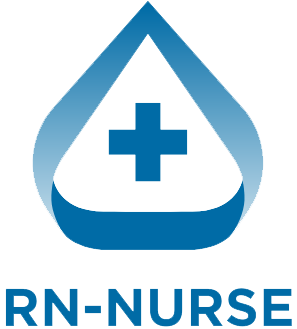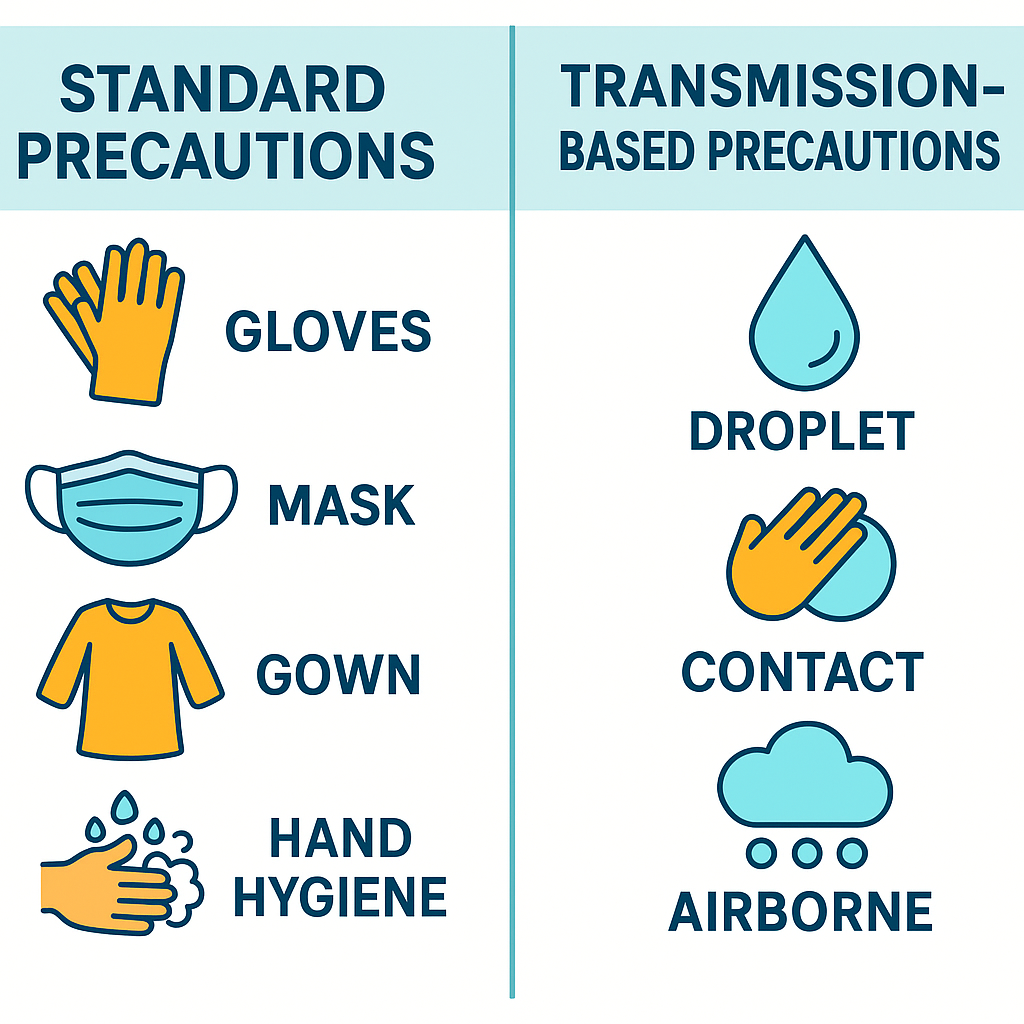Infection control is a top priority for nurses. Knowing when to use standard precautions and when to add transmission-based precautions keeps you, your patients, and other staff safe from infections. This quick guide breaks it down step-by-step.
🧴 What Are Standard Precautions?
Standard precautions are the basic infection control steps that every nurse uses with every patient, every time, no matter what.
They protect you from germs you can see and germs you can’t see yet.
Key points:
- Treat all blood, body fluids, secretions, and excretions (except sweat) as potentially infectious.
- Use personal protective equipment (PPE) when needed.
- Wash or sanitize your hands before and after patient contact.
Examples of standard precautions:
✔️ Hand hygiene: The most important! Use soap and water or alcohol-based sanitizer.
✔️ Gloves: When touching blood, body fluids, or broken skin.
✔️ Mask and eye protection: If there’s a chance of splashes.
✔️ Gown: If your clothes could get soiled.
✔️ Safe injection practices: Always use clean needles and dispose properly.
✔️ Clean equipment: Disinfect stethoscopes, BP cuffs, and shared items.
When to use:
Always! Even if the patient does not have a known infection.
🦠 What Are Transmission-Based Precautions?
Transmission-based precautions are extra steps used in addition to standard precautions for patients with certain known or suspected infections.
These precautions stop germs from spreading in three main ways:
1️⃣ Contact Precautions
- Used for: Infections spread by direct touch or by touching contaminated surfaces (e.g., MRSA, C. difficile, wound infections).
- Extra PPE: Gloves and gown before entering the room.
- Patient care: Use dedicated equipment (BP cuff, stethoscope). Clean surfaces often.
2️⃣ Droplet Precautions
- Used for: Infections spread by large droplets from coughs or sneezes (e.g., flu, whooping cough, COVID-19).
- Extra PPE: Surgical mask within 3–6 feet of patient. Goggles or face shield if splashes likely.
- Patient care: Patient wears a mask if leaving the room.
3️⃣ Airborne Precautions
- Used for: Infections spread through tiny particles that stay in the air (e.g., tuberculosis, measles, chickenpox).
- Extra PPE: N95 respirator or higher-level mask.
- Room: Negative pressure room if possible.
- Patient care: Limit transport; patient wears surgical mask if moving.
🩹 Key Differences: Quick Comparison
| Precaution | When Used | Extra PPE | Room Type |
|---|---|---|---|
| Standard | Always | Gloves, mask, gown as needed | Regular room |
| Contact | Touch-spread infections | Gloves, gown | Private room if possible |
| Droplet | Cough/sneeze-spread infections | Surgical mask | Private room if possible |
| Airborne | Airborne particles | N95 mask | Negative pressure room |
✋ Hand Hygiene: The #1 Rule
Whether you’re using standard or transmission-based precautions, hand hygiene is the single best way to stop the spread of infection.
Always:
✅ Wash or sanitize before & after patient contact
✅ After removing gloves
✅ After touching patient surroundings
🗂️ Tips for Nurses
✔️ Know your facility’s policies — they may have extra rules for certain diseases.
✔️ Teach your patients and families — explain why you wear a mask or gown.
✔️ Bundle PPE use — gather all supplies before entering an isolation room.
✔️ Dispose of PPE properly — remove in the right order to avoid contamination.
✔️ Document any isolation status in the patient’s chart.
📌 Why It Matters
Correct precautions save lives — including your own! They help control outbreaks, protect other patients, and keep you from bringing infections home.

